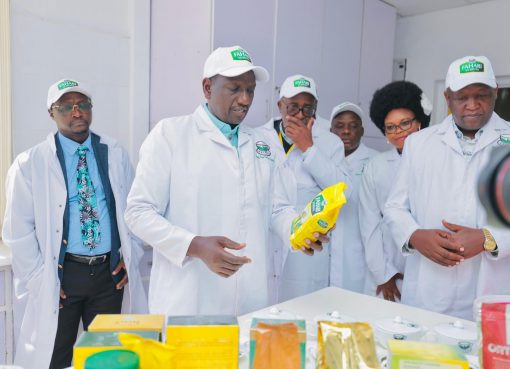For ages, Kenya’s tourism sector has been governed by what stakeholders call seasons. The high season, which runs from July to March, is a time of plenty. This is time for the flood gates to open and let out hordes of domestic and international tourists who flock hotels, lodges and national parks. They spend lavishly on cuisines, accommodation and other entertainment services while having fun and marveling at wildlife and scenic landscapes especially in the parks.
However, the high is replaced by the low season. This runs from April to June and is a period of extreme scarcity; often termed as hoteliers’ nightmare. The prolonged chill effect from the dearth of tourists adversely affects the sector. This leads to a steep decline in revenues and the situation is often so dire that hotels and lodges adopt extreme measures including laying off casual workers to stay afloat.
Mr. Livingstone Mghenyi, the National Chair for Domestic Tourism Association (DTA), equates the low season to a period of prolonged drought in the tourism sector.
“It is a nasty period with little activity. There are a few visitors and even the rates charged drop significantly. Hoteliers struggle to maintain their establishments as they wait for the return of the high season,” he explains.
Over the years, players in the sector have sought to regulate this cycle of annual seasonality to give the sector an all-year round profitability. This would be by having a steady stream of visitors in all the months. Such an innovative strategy is touted to break this seasonality headache and push to have robust activities across the tourism calendar.
Mr. George Osuri, Kenya Wildlife Service (KWS) Deputy Director in-charge of Parks and Reserves, says the solution to tackling the challenge of seasonality lies in diversifying tourism products and introducing more competitive activities.
This can lure tourists to visit the parks and hotels regardless of what time of the year it is. This approach is in line with the new tourism strategy that aims to position Kenya as an all-year round tour destination.
Mr. Osuri adds that bolstering the numbers visiting the parks and other tourists’ establishments in the low seasons will allow the sector to earn sufficient revenues translating to modest profitability throughout the year.
“We hope to eliminate the established view that the tourism sector can only boom during the high season. The aim is to make the low season be as profitable,” he explains.
A key initiative towards achieving this objective lies in reviewing the current conservation fees. This is expected to bring a more robust approach to conservation matters, intensify community engagement and streamline benefit-sharing amongst stakeholders in the sector.
Speaking at Voi during a stakeholders’ meeting for the proposed new conservation fees, Mr. Osuri noted it was important for stakeholders to understand modern conservation practice is a significantly expensive affair.
“To bolster the tourism sector, we must continuously engage in active conservation of our parks and wildlife. This will call for periodical review of conservation fees,” he said.
The review takes place every two-years. KWS is holding meetings with stakeholders in conservation sectors across Kenya with such meetings having been held in Nairobi and in Coast. Other fora are set to be held in the Central and Western regions.
Ms. Gladys Kosgei, KWS head of Marketing, says the review is necessary to increase competitiveness and position Kenya’s parks as premier destinations. It will also enhance conservation value, boost the community support by KWS and secure funding for conservation activities including security, Human-Wildlife Conflict and research.
“This activity will energize the activities KWS conducts to promote the parks and tourism sector as a whole,” she states.
KWS data shows conservation fees is the main cash cow and tops amongst sources for internal revenues. In 2022, conservation fees contributed 81 per cent of total KWS revenues. Licenses and permits had 18 per cent while rent of property and accommodation contributed 0.1 percent and 1 percent respectively. In 2019 alone, conservation fees contributed 88 percent of the total KWS revenues.
The current review will run from 2023 to 2025. It is expected to build on the sector’s post Covid-19 rebound and build resilience for an industry still recovering from the effects of the devastating pandemic.
The review will see introduction of new tariffs and additional 21 activities up from the current 12. Amongst the new activities include children bootcamps, guided cave explorations, photo sessions, filming, animal tracking, warden lectures and commercial photography amongst others.
To woo more tourists into the park, there is a marginal drop for some rates including park entry fees. Currently, premium parks like Amboseli charges Sh860 but will charge Sh800 in new rates. Tsavo will charge Sh500 down from the current Sh515. However, Nairobi National Park will pay Sh500 from the current Sh430. These rates apply to adults from the East Africa Community countries.
Governor Andrew Mwadime, says the community needs to benefit directly from such reviews. He adds that such benefits will create a new perception on conservation amongst the local residents.
“We live with the animals. The people need to benefit from conservation activities. This is one way to involve the local communities in conservation,” he said.
Mr. Osuri pointed out that communities bordering parks can benefit immensely from the proposed activities. He pointed out that for bird tracking and watching, community youths can be guides for bird watchers and earn revenue from their skills.
He further stated that KWS was willing to promote community-owned homestays in areas adjacent to the national parks and reserves.
By Wagema Mwangi




